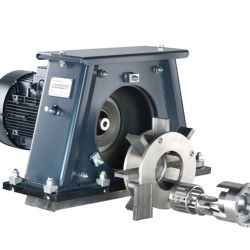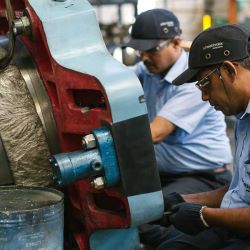Organising innovation
Wheelabrator’s expert design, production and assembly teams face many challenges day-to-day, but one of the key ones is how to keep up with the continuous innovation taking place within our own company – and make sure we learn from the nearly 30,000 machines we’ve got in the field around the world.
Of course, innovation is a good thing. It means we can meet the ever-changing needs of our customers, we ensure our products are the best on the market, and that we continue to be at the forefront of blast and peening technology. However, the amount of innovation taking place every day can also cause a headache for our teams.
Standard vs. customised machines
To explain why, we’ll need to set the scene a little. Wheelabrator’s ‘Standard’ wheel machine offering includes dozens of different options. In addition to these, we also have our parts offering, which includes everything from blast wheels to safety switches.
While all of these can be bought ‘off the shelf’ by customers who don’t need additional customisation, that doesn’t mean the products are frozen from an innovation perspective. We’re always looking at how we can improve our machines and parts, and sometimes an improvement on one could be applied to others.
It gets even more complicated with our ‘Special’ equipment, customised machines for customers who have very specific needs or are asking us to solve a particular challenge. This is where a lot of new ways of doing things are discovered, and where an established design can evolve into something completely new. Even a seemingly simple design decision, such as the positioning of the door lock, can have multiple iterations – and may result in a new approach that could benefit machines across other ranges.
Creating organised innovation
And this is where – if we’re not careful – inefficiencies can be created. When meeting a customer order we have a Bill of Materials (BOM) which details what parts and assembly are needed. Over time there are innovations and changes being made during the process of fulfilling different customer orders, yet these aren’t always fed back to the original BOM.
This means that the same innovations are being developed in slightly different ways by different teams, or the same problems are being faced without the knowledge that there’s already a solution somewhere else. As an example, we now have several different BOM structures for the right safety door on our RDS-4 shot peening machine alone.
If a team working on a specific order is having to find solutions that already exist, ultimately it means that the lead time for getting the machine to the customer is not as short as it could be. Now, we already have fantastic lead times – as little as 4-8 weeks for some of our SmartLine products – but that doesn’t mean we can’t improve them. To do this, and to make life easier for our teams, we wanted to bring more order to the process of development at Wheelabrator – creating organised innovation.
This drive for organised innovation has led us to create a MasterBOM. The idea behind it is that we will have one BOM for each machine type and size which is continuously used and updated, eliminating any doubling of design efforts. Our aim with the MasterBOM is that it will include the latest innovations from across the world, so each time we work on something new for a customer, something that improves the machine, the BOM will be updated to include these improvements.
Accelerated production of customised machines
As well as saving us time from a design perspective when another customer asks for something similar, we will also be able to deliver the finished machine faster.This means that we are constantly pushing the state-of-the-art and are able to roll out improvements as we discover them, allowing our customers to benefit from learnings and innovations almost instantly.
Another way in which the MasterBOM will help us to get machines to customers faster is that we have used its creation as on opportunity to update the BOM structure and split out the different components of a machine group into different ‘sub-projects’.
The major advantage of doing this is that production can be speeded up. For example, if a customer requires a standard blast cabinet, but needs customisation of the motors, the blast cabinet ‘sub-project’ – which equates to about 95% of the production time – can go ahead straight away, while the design of the motors takes place. This means shorter production lead times, and machines that reach the customer even faster.


